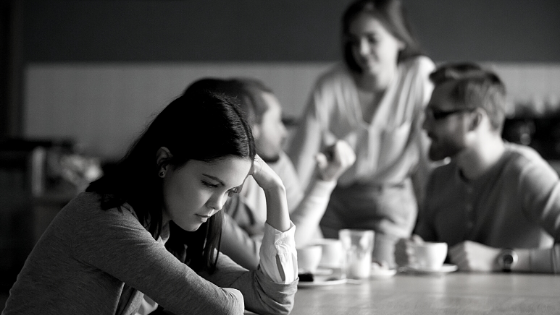COVID-19 has resulted in a number of restrictions being introduced, including social distancing measures. Remote working, and limited contact with family and friends has created feelings of loneliness for many workers. These feelings of isolation are extremely common, however many workers are reluctant to talk about them, they feel that it may reflect poorly on their work performance, and how they are perceived.

Loneliness can indicate a lack of meaningful connection with others, and can be an indicator of distress. Some groups of workers are more likely to experience feelings of loneliness, including those who live alone, and those with a pre-existing mental or physical health condition.
Loneliness can be exacerbated by a drastic change in routine and a change in the type and frequency of interactions with others. The constant unpredictability brought on by COVID-19 can result in protracted stress, with feelings of loneliness compounding over time. Social distancing measures means that many of us are missing that ‘incidental contact’ with others i.e. small talk at the sporting activities, and ad hoc coffee catchups.
Increased levels of boredom can also contribute to feelings of loneliness; a distinct lack of distractions can intensify negative thoughts, while a possible lack of control (over work and personal circumstances) can also be incredibly frightening for many workers.
Given the impact that loneliness can have on the mental health status of many workers, it is important that employers provide additional support and resources to team members who may be struggling. While it can be difficult to identify individuals who are experiencing elevated levels of loneliness, there are a few signs that may indicate when a worker requires further support:
- Changes in behaviour: Failure to engage in the way that they previously would; using distancing measures such as turning audio visual off during work calls, not responding to emails. These changes could indicate a lack of motivation, as can experiencing difficulty completing tasks, and lack of general preparation for meetings and calls
- At risk groups: Where known, maintain a connection with workers who have experienced anxiety or depression (or another mental illness) previously, as this group of workers are at increased risk of experiencing feelings of loneliness and/or depression at this time. Also be aware of workers who may have previously required support for mental health conditions or physical health concerns.
- Lack of connection: Consider those employees who may have limited family, or a small or non-existent social group, as this group may feel further isolated with social distancing measures in place i.e. loss of ad hoc interactions with others with the introduction of remote working arrangements, and limited contact with social group/s due to restrictions.
- Support those that ask for it: Make note of workers who express feelings of despondency, sadness, and/or anxiety. These feelings may come up in passing during conversations with colleagues, and can include comments about feelings of helplessness.
- Changed habits: Loneliness can impact on mental and physical health, taking a toll on overall cognitive performance, sleep quality, and decision making. Observe changes in how workers interact with others, and take note where a worker demonstrates a lack of energy and changed behaviour, including a possible shift in eating and exercise habits, or emailing and logging into work at odd hours of the night/day.
Prolonged loneliness is a ‘major but underappreciated determinant of health, placing individuals at greater risk of premature death than obesity, inadequate physical activity, or air pollution’.
Holt-Lunstad, 2010
Strategies for workplaces to help manage loneliness:
- Connection: Encourage workers to have an outlet, journal, friend to vent to, exercise, meditation. Focus on what is important (connection with friends and family), and encourage them to enhance the quality of interactions that they CAN have. Employers can offer ways to stay connected through regular briefings, a buddy system, and using technology platforms that allow workers to get an audio/visual connection with others. Remember that disconnecting can be just as important for many, and encourage workers to create boundaries and switch off from work if required.
- Professional support: Encourage workers to take up professional support that is available, including EAP services connected to the workplace. Provide flexibility within the workplace to assist with roles and responsibilities, and consider providing additional support i.e. peer support, webinars on managing change
- Routine: Establish a new routine that works for the changes in your team members lives. Ask them about other commitments outside of work, and understand that they may be managing a number of other stressors outside of the work environment. Encourage workers to be flexible in physical and thinking habits
- Encourage self-care: including healthy eating and exercise habits, making sure that they are sustainable. Creative hobbies (i.e. painting, reading, home decorating) can help workers steer away from more destructive behaviours, encourage workers to improve their home environment
- Share with others: Normalise conversations around loneliness, to reduce the stigma and shame attached to loneliness. Let your team know that you understand this is an unprecedented situation, and that you are also learning to navigate changes in your own work and home lives. This can help to open the lines of communication within your team and organisation as a whole.
Links to support networks:
Reach out and talk it through
- Beyond Blue 1800 512 348, https://www.beyondblue.org.au/get-support/find-a-professional
- Lifeline 13 11 14
- APS: Loneliness and Isolation during COVID-19
- http://endloneliness.com.au/



















